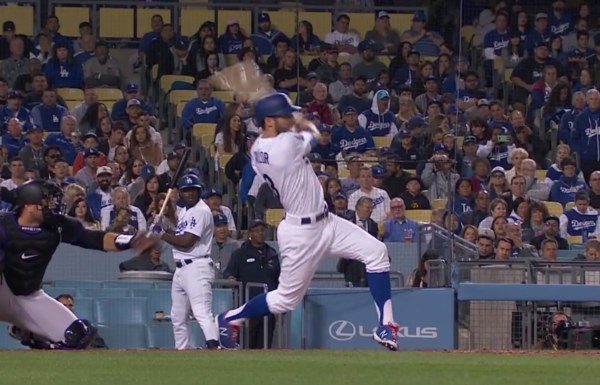Late last season, I wrote about Chris Taylor‘s batted ball and plate discipline profile and was confounded as to why he was struggling more in 2018 than he did in 2017.
Maybe his 2017 is going to be the outlier of his MLB career. Perhaps he’s more like the 2018 version of himself. That’s still a quality player (113 wRC+, 3.1 WAR), but this season, he seems to be regressing.
Sure, he hasn’t gotten nearly the amount of playing time he had been used to the last couple seasons, but a dive into his numbers show some worrying trends.
Of players with 80 or more plate appearances so far this season, Taylor’s 39 wRC+ is 11th-worst in baseball. He has a -0.4 WAR, thanks in part to being a solid defender at every position he plays. But the offense is the big problem here. You might think it’s strikeouts, but his K-rate is actually down 3 points from last season. He’s also walking a little more, but the real issue is contained in the batted ball and plate discipline numbers.
Taylor is sporting a paltry .212 BABIP. That’s bad. It isn’t as bad as Joc Pederson‘s .194, but Joc has 10 dingers and is one of the more productive overall hitters on the team. Taylor also has seen his ground ball rate spike to 50.9 percent after settling at 33.6 percent last season. His line drive rate is down to just 15.1 percent, and his hard-hit percentage is down almost 18 percent from last season. The big takeaway here is he’s not hitting the ball hard and he’s not hitting the ball in the air — two staples for him over the last couple seasons.
As far as plate discipline goes, it supports some of these struggles. Taylor has chased pitches at an increased clip of 2 percent, which has actually led to an increase in contact on pitches outside the zone. But since pitches outside the zone don’t foster as much good contact, that could help explain the decrease in the hard-hit rate. He’s also swinging at more pitches in the strike zone (up 4 percent), but not making as much contact when he does (down 5.5 percent). Overall, his contact rate is down about 3 points and his swinging strike rate has jumped by 2 points, but it hasn’t negatively impacted his strikeout rate yet.
Dodgers’ hitting coach Robert Van Scoyoc, who was largely credited for Taylor’s breakout 2017 season, has some work to do with CT3 if he’s to get back to not just being the above-average player he has been the last two seasons, but to get him back to an MLB-worthy level. Because right now, Taylor is one of the worst hitters in baseball. With A.J. Pollock out and Alex Verdugo set to get a fair share of playing time, if Taylor isn’t producing, it might be hard for him to get on the field in any other role than against left-handed pitching. We’ll see if he can turn things around.
 Dodgers Digest Los Angeles Dodgers Baseball Blog
Dodgers Digest Los Angeles Dodgers Baseball Blog
